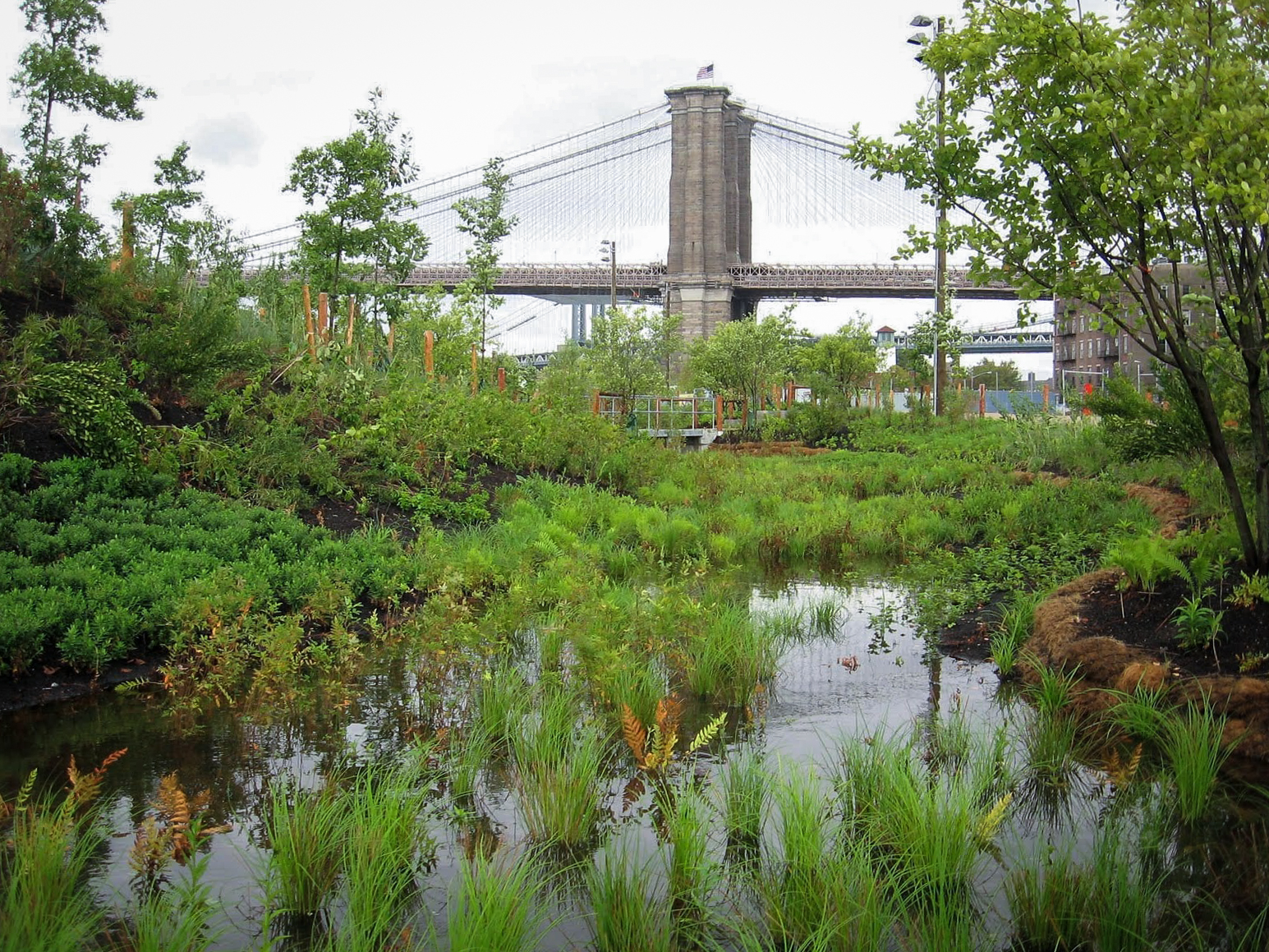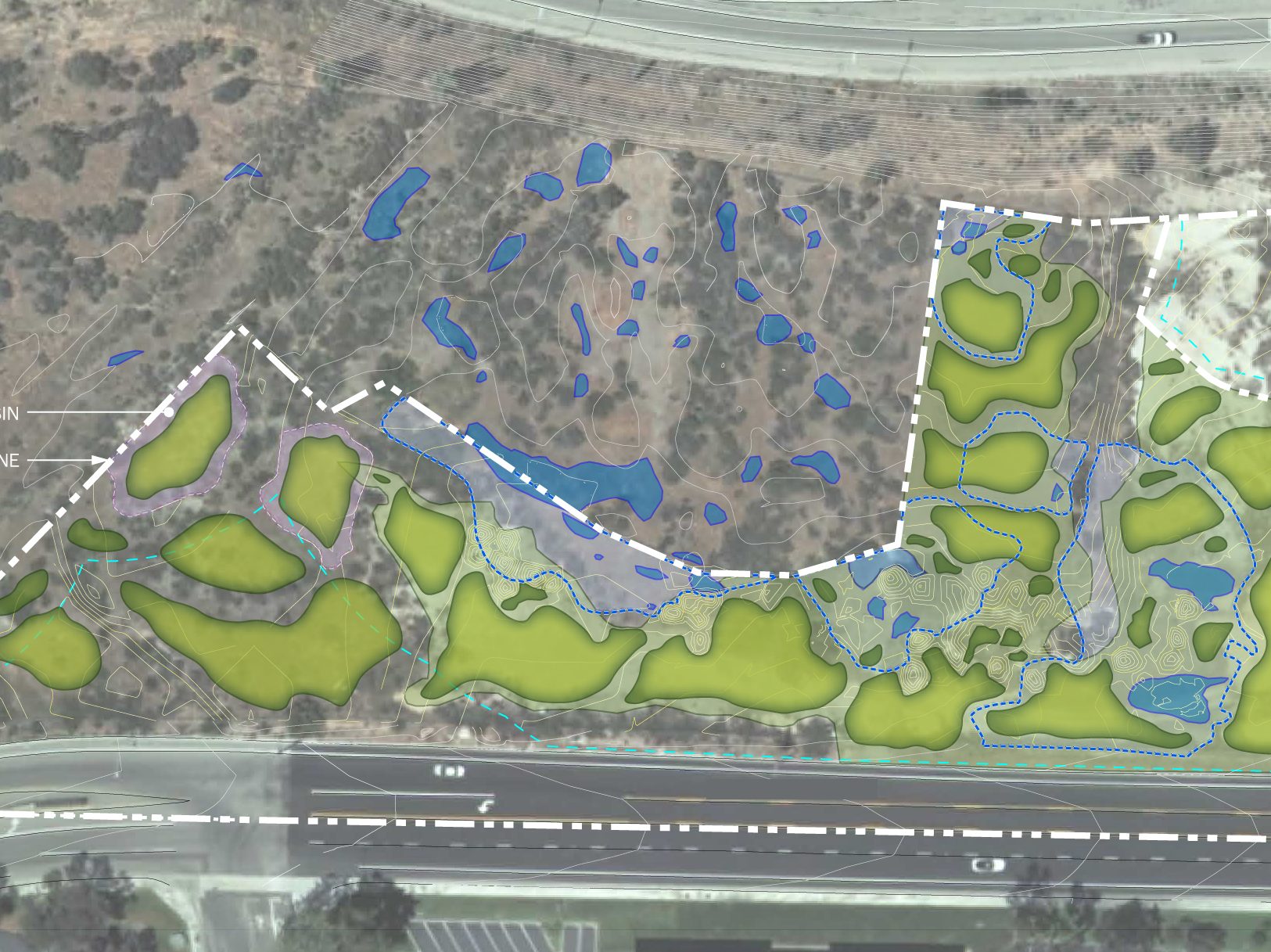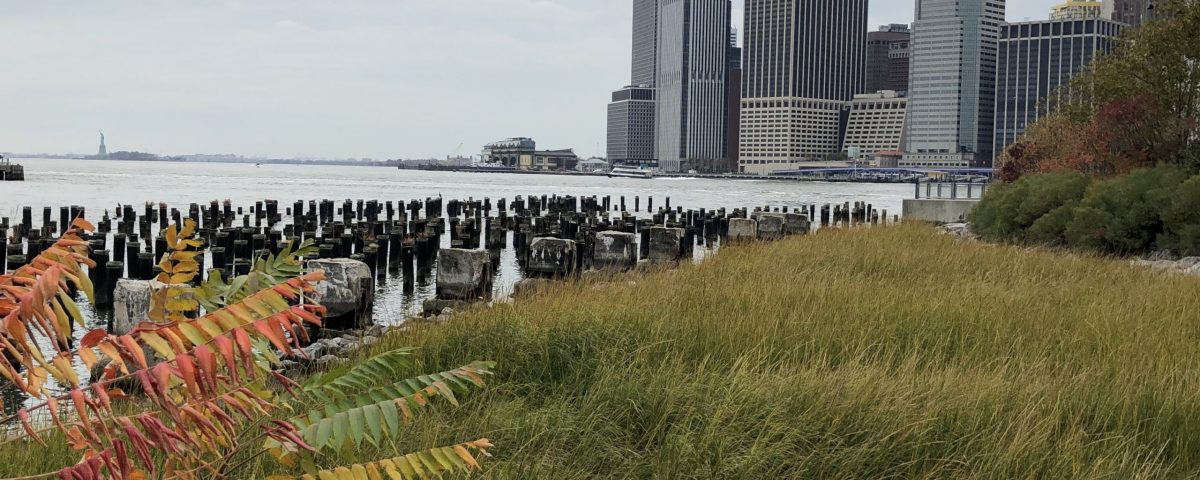Brooklyn Bridge Park Ecological Design
Brooklyn, NY
Client
Brooklyn Bridge Park Development Corporation
Partner
Michael Van Valkenburgh Associates
Services
Ecological Design
Habitat Evaluation
Vegetative Survey
Great Ecology served as the ecological designer on the Michael Van Valkenburgh Associates team, contributing strategic design and technical expertise to the conversion of the East River industrial piers into recreational areas, which provide public access to restored native coastal and intertidal coastal habitats. This included an evaluation of similar restored habitats; a vegetative survey of the pre-restoration park site; and an ecological summit that covered a variety of topics including the current vegetative conditions, the growing medium and hydrological conditions, and proposed improvements for creating ecological uplift at the site.
As part of this uplift, Great Ecology was integral to the planning and design of freshwater wetlands, tidal wetlands, and tidal pool features. Additionally, Great Ecology helped design a cove that utilized white cedar stumps for both aesthetic appeal and habitat creation. Careful analysis was done on appropriate placement of these stumps to enhance depositional structure on the shoreline. To better manage stormwater and inundation, Great Ecology helped design the swale system throughout the park including determining elevations, dimensions, planting substrate, and plant species. Some of these swales are specifically designed to retain stormwater, and allow it to be filtered by plants, before it enters the East River.
Brooklyn Bridge Park represents one of the most important interfaces between ecology and urban public space in the United States, and is one of the City’s most spectacular public spaces.

Photo courtesy MVVA




Awards
2014 National Planning Excellence Award
Urban Design - APA
2011 Rudy Bruner Award - Silver Medalist
Bruner Foundation Inc.
2010 Honor Award for Master Plan
Design the Parks
2009 Analysis and Planning Award
ASLA Honor
Articles
Resilient Design

Great Ecology designed the wetlands and swale system with salt-tolerant plantings, sandy soil composite, and other features to withstand stormsurge, rising sea levels, and winter conditions. During hurricane Sandy, which left much of the park inundated by brackish water for more than four hours, the wetlands and swale had minimal plant loss. .
The Interface of Ecology & Urban Space






